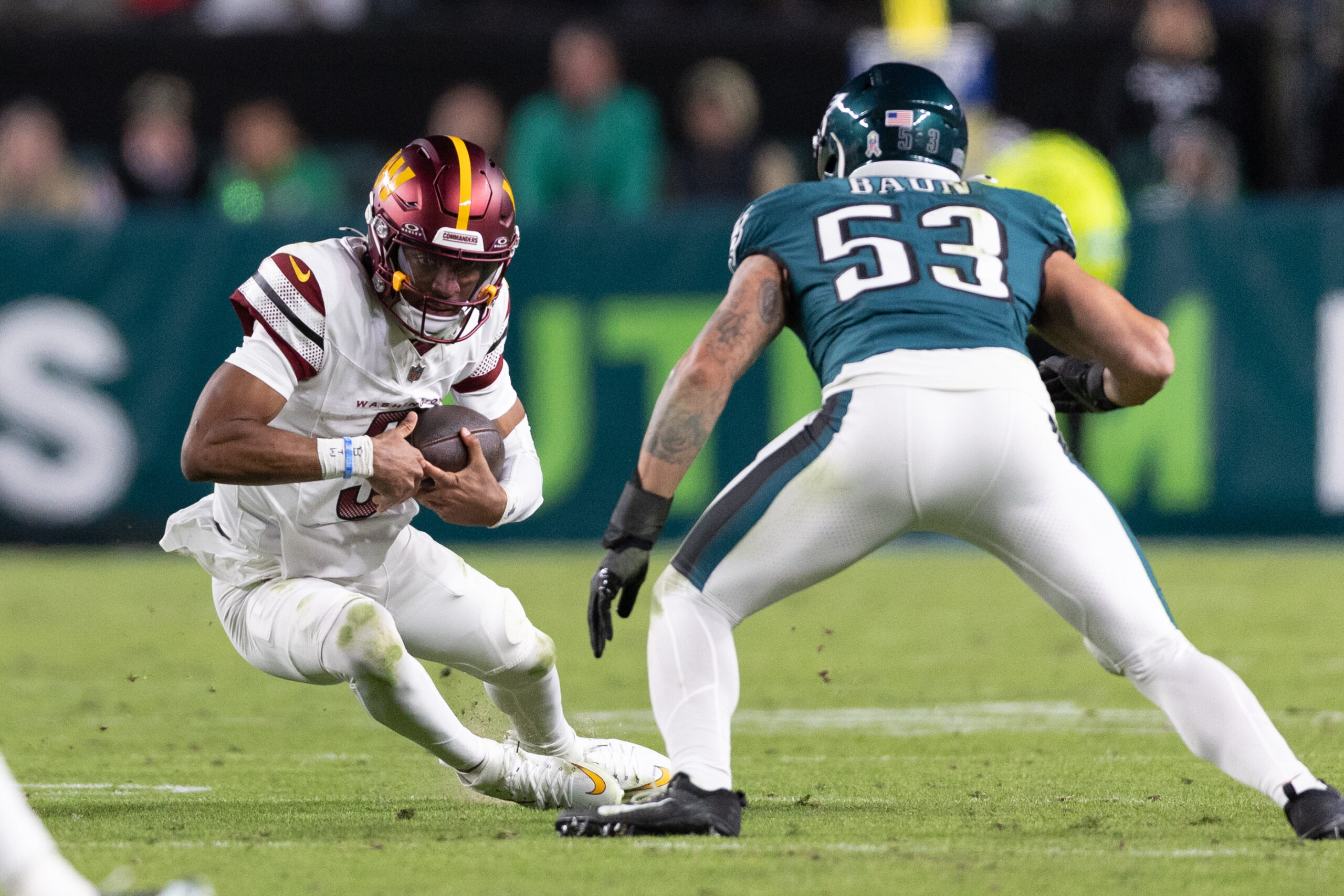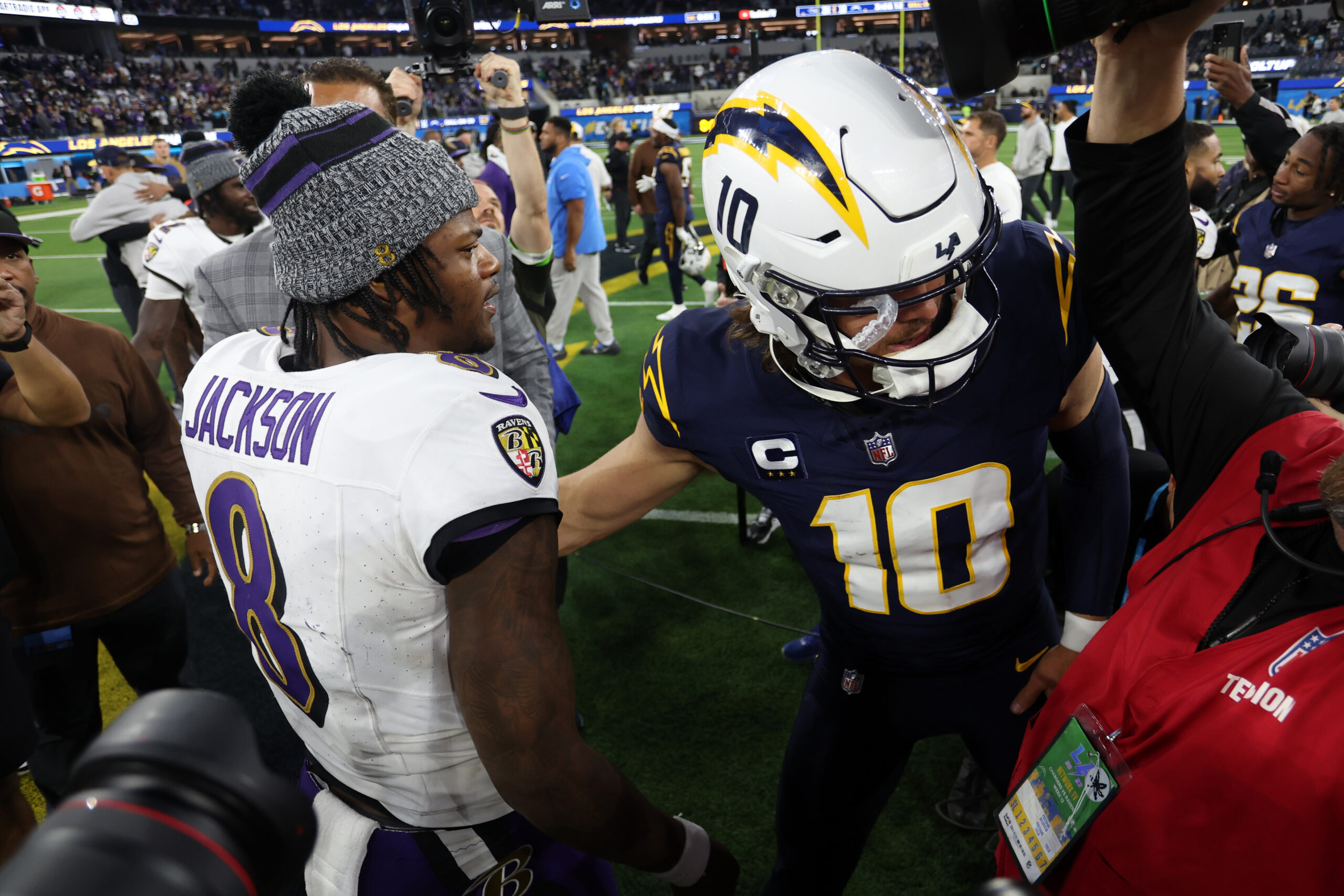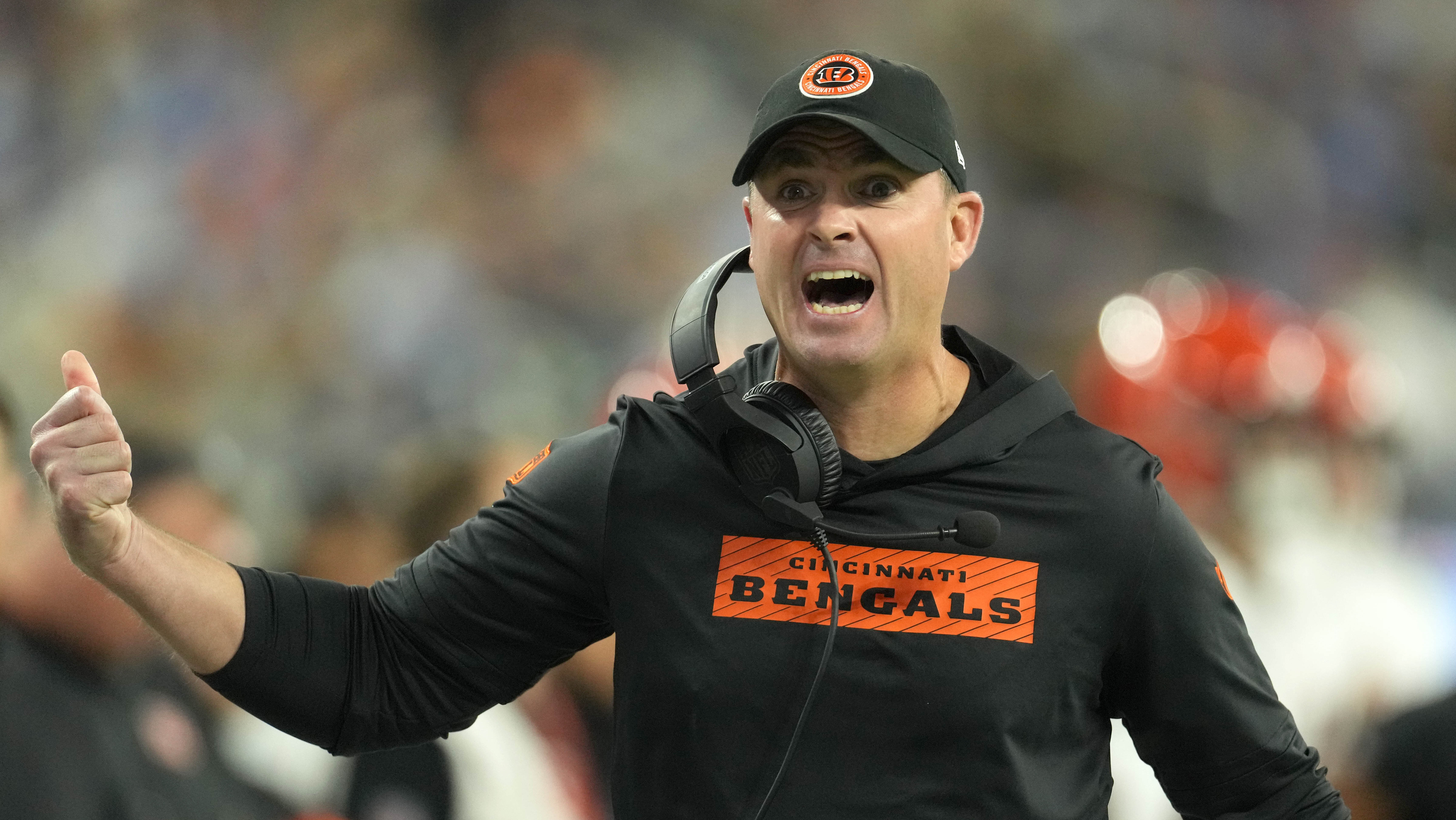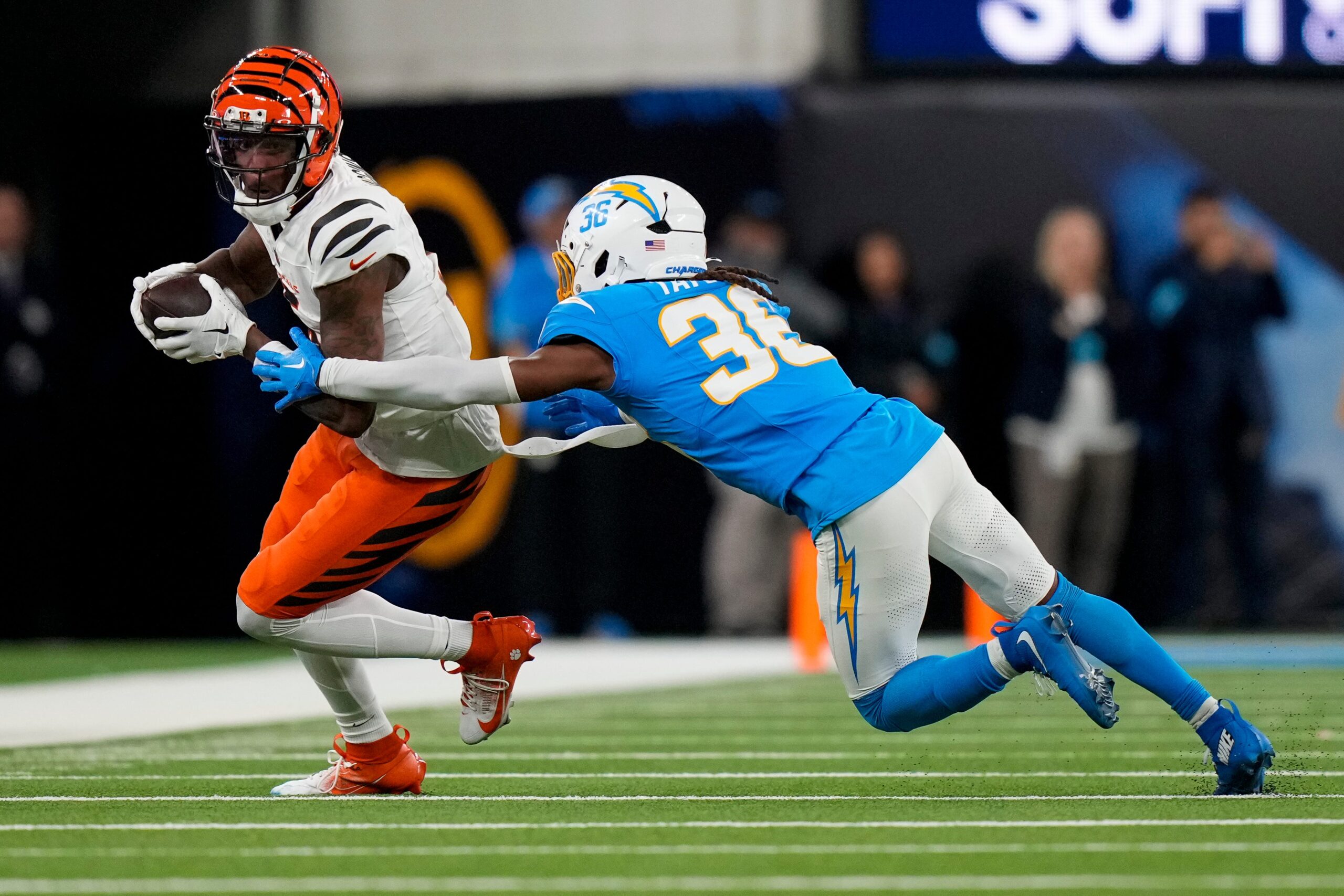NFL Analysis
7/3/24
8 min read
Will Levis Has The Goods, But His Fatal Flaw Might Prevent a Year 2 Breakout

Take a collection of the best Will Levis throws during his rookie season, throw them in a cutup posted to Twitter, and he can look like a quarterback with top-10 potential.
Because of that upside, it makes sense the Tenessee Titans are going into the 2024 season with pieces in place to make life easier for the 2023 second-round pick. They're trying to give him a season to prove he could be the starting quarterback going forward.
But there is more to quarterbacking than just the highlight throws, and that will be the focus for Levis in Year 2. Overall, Levis was 21st in EPA per play but 30th in success rate among quarterbacks last season.
Down-to-down consistency was one of his biggest issues and will have to be where he shows the most improvement in 2024. Part of that is Levis saving himself from himself.
>> Other QB Breakdowns: Richardson | Lawrence | Young
Taking Hits
No quarterback took hits on a higher rate of dropbacks than Levis at 25.5 percent. The next highest quarterback was at 20.4 percent, with only one other passer eclipsing a 20 percent rate.
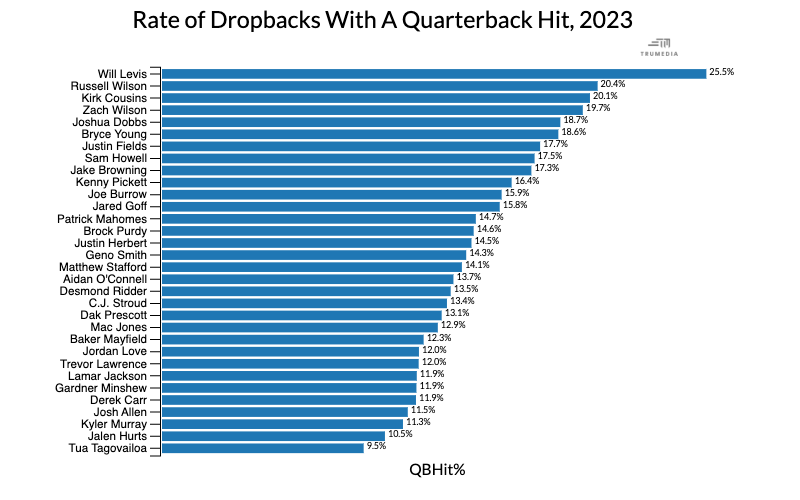
This also extended to how he treated scrambles and runs in the open field. Levis didn’t take off to run often, but when he did, he treated the first down marker like the goal line.
Will Levis will treat a first down like the goal line pic.twitter.com/cv41XiXhT1
— Dan Pizzuta (@DanPizzuta) July 3, 2024
Levis played behind an objectively bad offensive line, though the quarterback did not help himself much. He was the opposite of Anthony Richardson in terms of innate feelings in the pocket. Levis allowed defenders to come in undetected, which made for some big hits inside the pocket. When Levis did see the pressure coming, he did not shy away from trying to get the throw-off as the defender closed in, leading to more big hits.
Sometimes, Levis relied too much on his positive traits, making it a net negative. He would wait an extra tick before getting a throw off because his arm strength could get the ball there, or he would try to fully flee the pocket to get space to launch a pass.
That’s a balance Levis and the Titans attempted to even out on the fly because the offense needed big plays, but that also left it vulnerable to many lows. Of Levis’s 28 sacks, five resulted in a fumble. That 17.9 percent rate was the fifth-highest in the league. He also had the sixth-highest pressure-to-sack rate.
Fixing pocket presence can be easier said than done. This is often a skill that comes naturally, and for those who don’t feel pressure well, it can be a fatal flaw in development.
There are ways to structure around it, but those are often temporary. Think of how the Giants constantly had Daniel Jones on the move and outside the pocket during his 2022 season. Jones did not see his feeling for pressure improve; he was just exposed to it less, and the flaw showed back up in 2023.
A home run swinger
Another part of Levis’ low success rate was due to how often he tried to create a big play with deeper throws. Levis led the league with a 10.5-yard average depth of target, a yard and a half more than the No. 2 quarterback.
This was also part of the calculus of how the offense could get what it needed out of Levis’ strengths. Much of the offense was based around deep shots off play-action. That, in theory, allowed Levis to buy time in the pocket and let things develop down the field.
When using play-action. 31.9 percent of Levis’ throws traveled at least 20 air yards, again the highest rate in the league. Only two other quarterbacks were above 20 percent.
— Dan Pizzuta (@DanPizzuta) July 3, 2024
Overall, just 36.1 percent of Levis’ pass attempts traveled between 1-10 air yards, an obscenely low rate. Most NFL throws happen at the depth, with the league average at around 48 percent in 2023. The last quarterback to have a short-area passing rate lower was rookie season Josh Allen at 34.4 percent. Even then, Allen had a higher success rate on intermediate throws and showed more poise in the pocket.
Because of the high rate of play-action and the impact of protecting the offensive line (and Levis), Tennessee used the lowest rate of passing plays, sending five players into a route at 59 percent. The next lowest was Kirk Cousins at 62.3 percent, the only other player below 65 percent.
Levis also defaulted to the deep pass to attempt to beat a blitz, as 20.9 percent of his passes against the blitz traveled 20 or more air yards. That was easily the highest rate in the league, with the No. 2 quarterback at 17.3 and only one other player at more than 15 percent.
Looking for the deep ball against the blitz can signify a broken offense and/or slow processing against those extra rushers. There’s certainly a case for the former, but there’s a lot of evidence for the latter. He was one of two quarterbacks in the league, along with Justin Fields, who had fewer than 50 percent of his pass attempts come within 2.5 seconds of the snap.
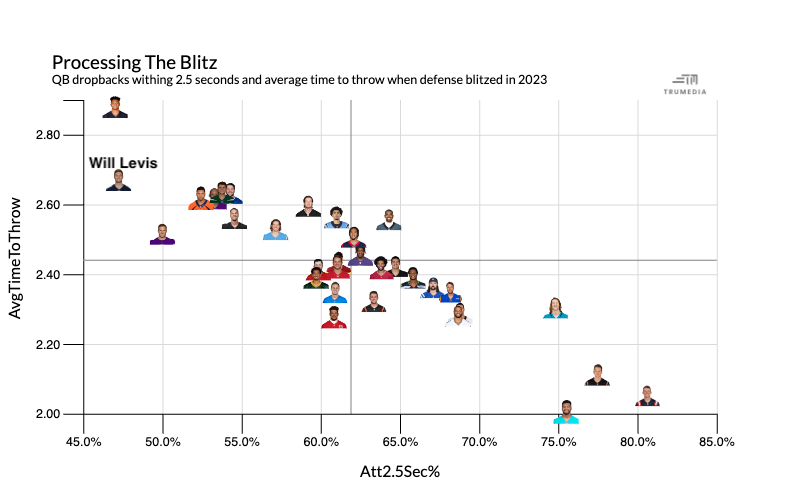
As a result, Levis had the lowest success rate in the league against the blitz.
Levis routinely looked to run around and evade pass rushers instead of standing in the pocket and delivering quick passes that could beat the blitz. There was a disconnect between identifying the answers before the snap and trying to find them once the play began.
Keep Him Clean
What keeps Levis intriguing is how well he played under ideal circumstances. On plays in the pocket with no pressure, Levis was 11th in EPA per play.
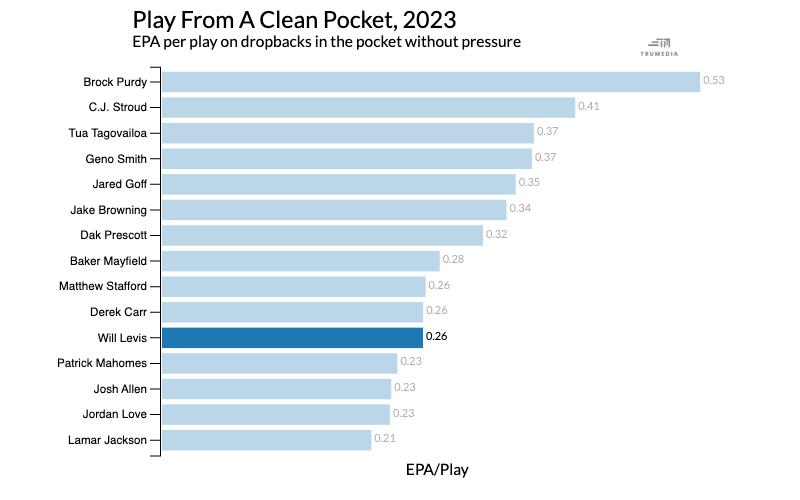
The problem is that the league’s best modern quarterbacks have separated themselves by how they handle pressure and create out of structure. So many of those clean pocket throws were set up by play-action and those longer-developing plays.
Levis was also one of two quarterbacks, along with Fields, to have fewer than half of his total dropbacks come from a clean pocket (49 percent). Part of that was due to the offensive line, but Levis was also responsible because of his play style.
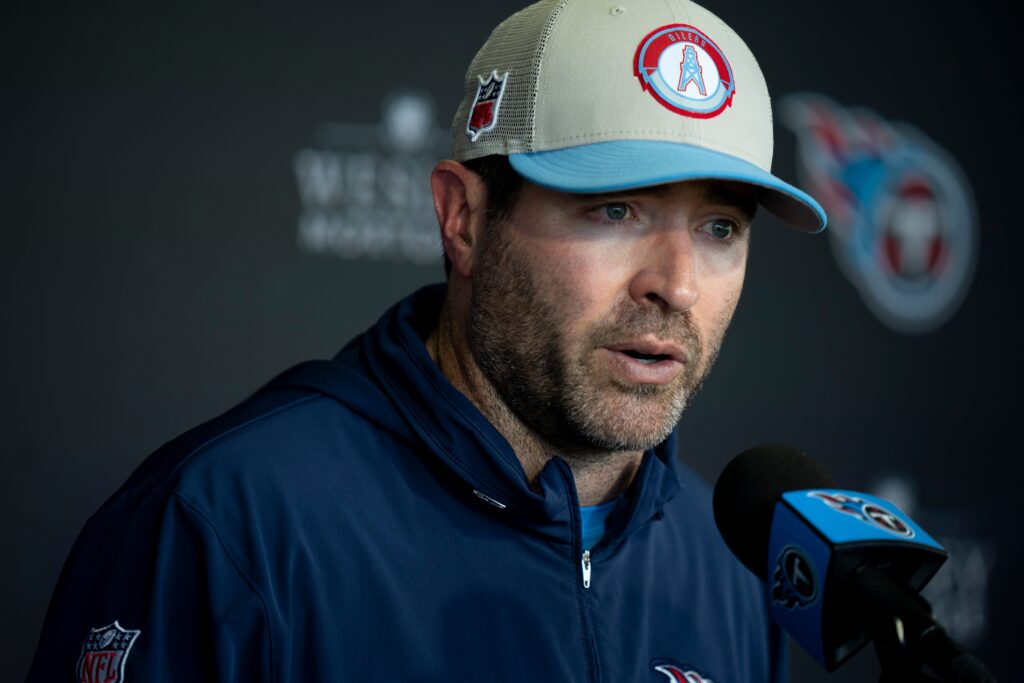
A new system
Levis will get a fresh start offensively for 2024 with former Bengals offensive coordinator Brian Callahan as the new coach. Bill Callahan was brought on to coach the offensive line, which should give the Titans a boost there, on top of some additions in talent.
The Titans also upgraded the receiving corps, adding Calvin Ridley and Tyler Boyd to pair with DeAndre Hopkins. This will have a ripple effect down the lineup as TE Chig Okonkwo, a small sample superstar as a rookie, will be a third or fourth option in the passing game rather than a misplaced No. 2.
Elements of what Callahan used in Cincinnati could also benefit Levis, the biggest of which might be more empty formations. Going back to LSU, Joe Burrow thrived in empty, and the Bengals heavily implemented those looks into the offense once Burrow was drafted. Empty formations allow the offense to spread the field horizontally and force the defense to give a more definitive pre-snap picture of what’s coming.
This is one area where Levis looked comfortable as a rookie. He was seventh in EPA per play out of empty in 2023, but that came with a 39.5 percent success rate, which ranked 23rd.
Levis still had the highest aDOT out of empty at 11.2, but he also had a sped-up process — in a positive sense — and got the ball out quicker.
— Dan Pizzuta (@DanPizzuta) July 3, 2024
Callahan can incorporate some of the quick passing Burrow favored in empty to get the ball out in rhythm, give the quarterback more control at the line, and partially protect him from having long dropbacks behind an iffy offensive line. Levis could get some more easy throws to boost the success rate and not rely on so many big throws.
There could also be an element of the 2021 Rams offense with Matthew Stafford, who used vertical shots off empty at a high and efficient rate.
In Cincinnati, Callahan (under Zac Taylor) could adjust an offense to a quarterback’s strengths. The initial Burrow offense borrowed a lot of what the quarterback liked to do in college. Then, when the shotgun passing game and under-center running game didn’t mesh, there was a change for the run game to go more shotgun-based.
Then, during the second half of 2023, it looked like a completely different offense with Jake Browning. The offense had more in-breaking routes, under-center looks, and yards after the catch.
Levis has the type of raw talent that should make him interesting as a developmental prospect. However, some traits could serve as fatal flaws. If Levis can control his processing and handle pressure better, his arm talent could shine.
He’ll get the chance to do that in a situation that should be better than his rookie season. It remains to be seen if that will be enough to find a sustainable version of the quarterback Levis currently is.

